Giorgia Volpe (b.1969)
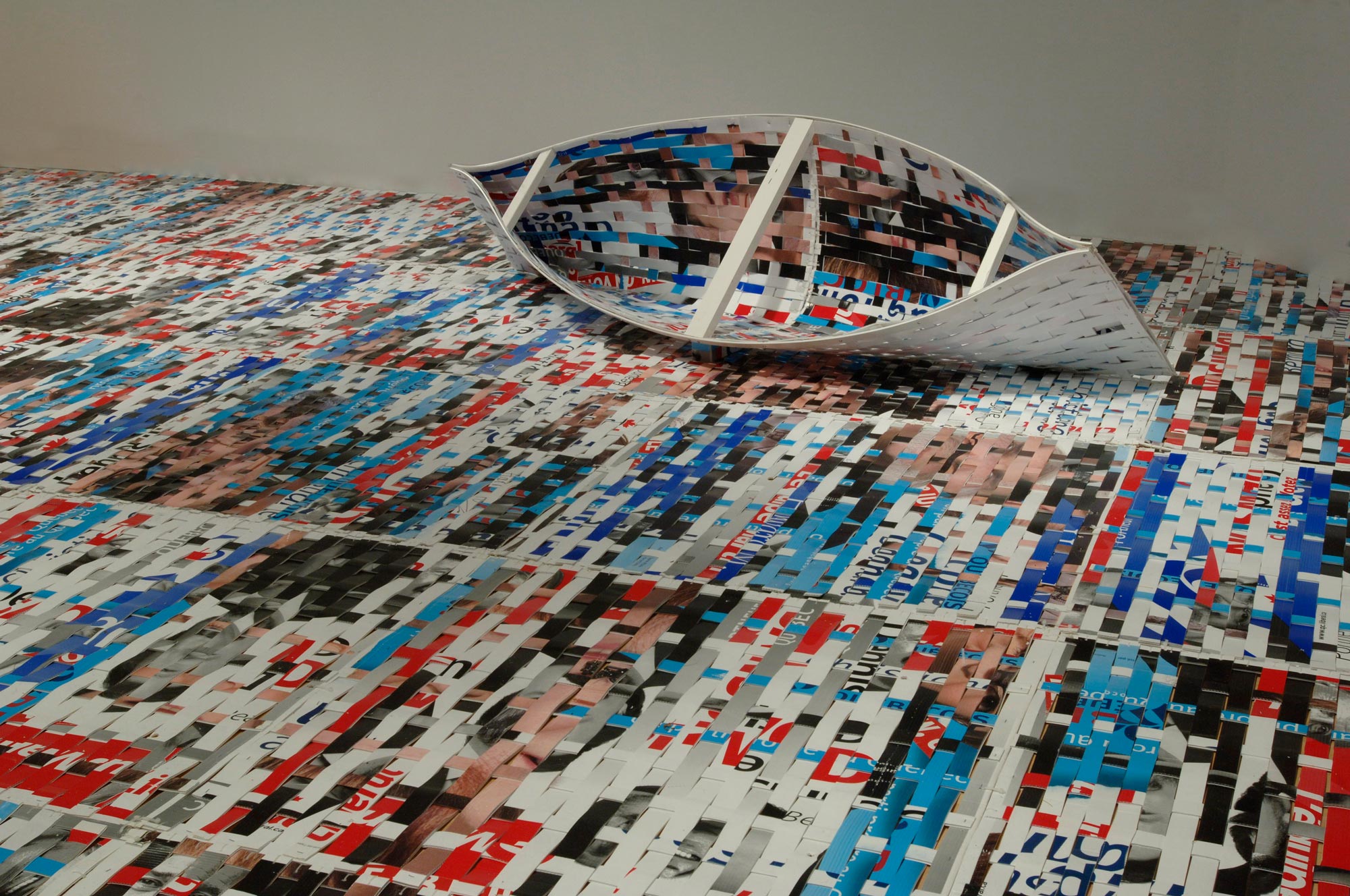
Giorgia Volpe, La dérive (Drift), 2008
Polypropylene, dimensions variable
The above image depicts an installation view of La dérive from the exhibition C’est arrivé près de chez vous (It Happened in Your Neighbourhood) at the Musée national des beaux-arts du Québec, 2008–9.
A Quebec City artist originally from São Paulo, Brazil, Giorgia Volpe earned her bachelor’s degree in art education before pursuing her master’s at Université Laval’s École d’art from 1998 to 2001. This journey led her to make her home in the city, where she has left her mark with works in situ that shape the urban landscapes where they are located. A multidisciplinary artist, Volpe developed a practice in performance and multimedia installation and began gaining recognition through the Coopérative Méduse, a hub for contemporary and experimental art. In 2008, she was one of approximately fifty artists from the capital invited by the Musée national des beaux-arts du Québec (MNBAQ) to take part in the exhibition C’est arrivé près de chez vous (It Happened in Your Neighbourhood), organized in honour of the city’s four hundredth anniversary. There, she presented La dérive (Drift), an installation that introduced the full-scale canoe motif that would become a recurrent theme of her work.
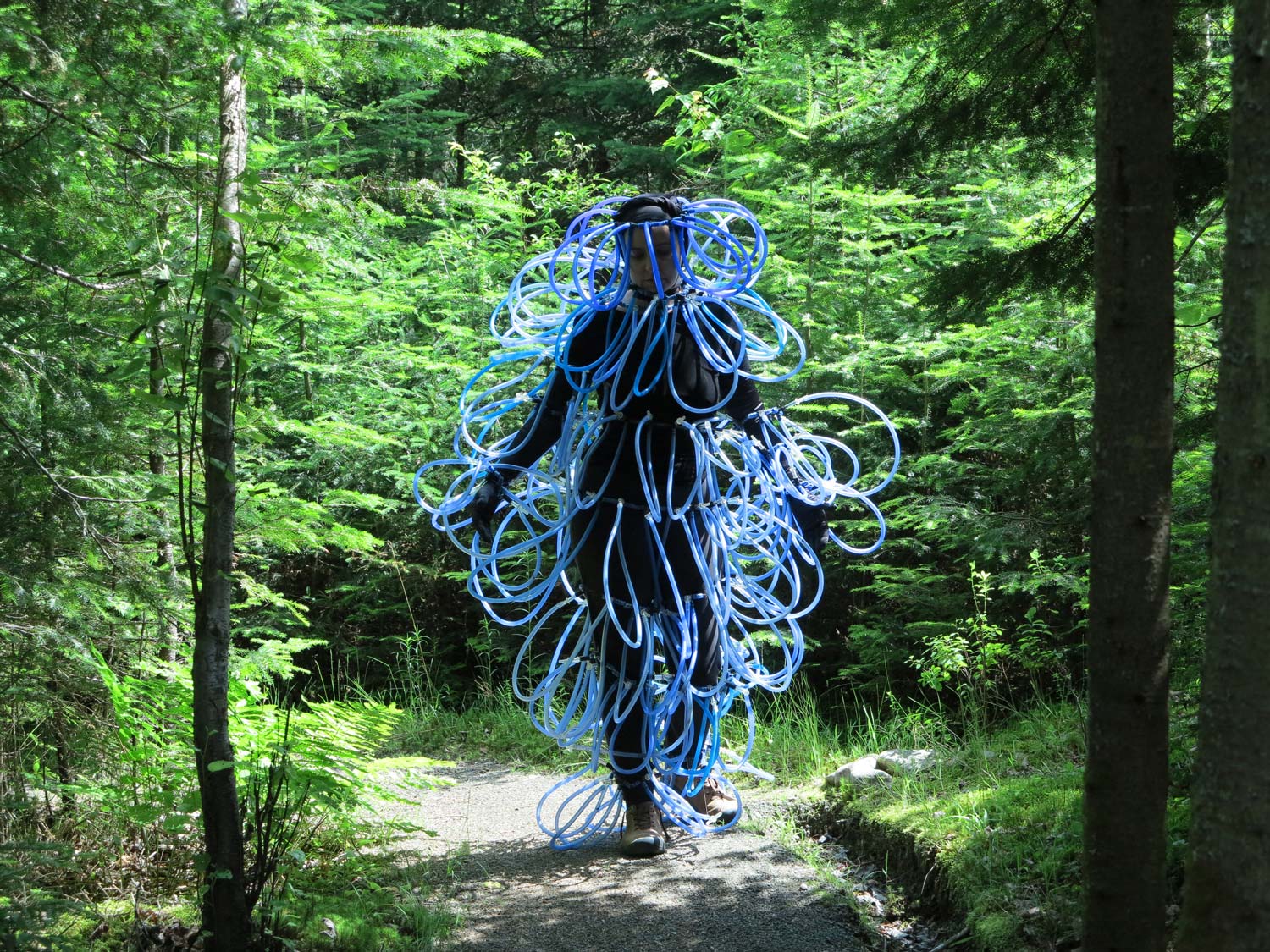
Volpe’s preparation period for the 2008 exhibition coincided with the end of a provincial election campaign, which left an abundance of corrugated polypropylene election signs scattered across the city. This is the material the artist recycled for La dérive. The canoe is made from strips cut from the plastic signs and woven together using a traditional basketry technique. It rests on an expansive surface made of the same material. “Highly relevant to the political climate of the time, the installation highlights the emptiness of the promises made by politicians who take us for a ride, while also evoking Quebec folklore, particularly the chasse-galerie. Humour intertwines with questions of political resistance and belonging.”
Eight years later, these themes reappeared in a powerful installation by Volpe that transformed the city’s landscape. Passage migratoire n° 1 and n° 2 (Migratory Passage No. 1 and No. 2), 2016, feature more than a dozen canoes suspended in time and space. True to her practice, Volpe reinvests “elements from previous works into new ones. It’s not a sequel, but a form of recycling, always in dialogue with the context in which the work is presented. In a way, resistance involves persistence, repetition, and recycling…. It provides a means to resist consumerism, to cope with situations such as recession, poverty, or the overproduction of waste.” In 2016, the flotilla was strung across the open space above a street in Place Royale, overlooking the river in the city’s Petit-Champlain district. These boats call to mind those hanging from the ceiling of Notre-Dame-des-Victoires Church, many of which are offerings carefully crafted to ensure divine protection for sailors.
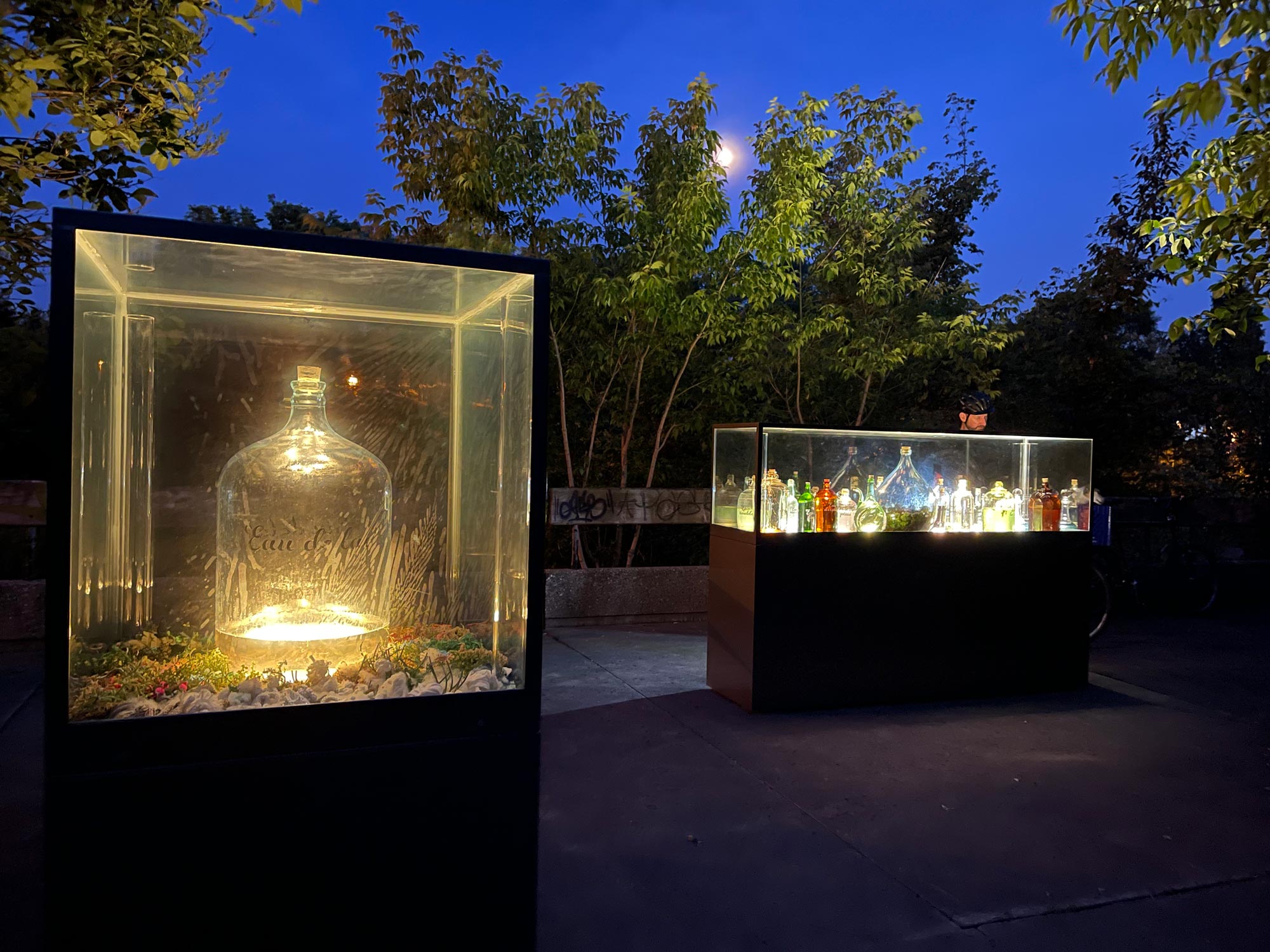
Volpe’s artistic approach showcases skills rooted in traditional knowledge—particularly those associated with textile arts, such as embroidery, weaving, and braiding—but it also reuses and transforms industrial materials into aesthetic objects. Often located in urban areas, these works also involve a process of exchange, whether it is with passersby, visitors, or neighbours.
More recently, the city commissioned Volpe to create a work that would raise awareness about the environmental impact of plastic bottles. Le musée de l’eau (The Museum of Water), 2023–24, an installation along the trails of the Saint-Charles River, takes the form of a cabinet of curiosities filled with mysterious bottles inscribed with water-related expressions (eau vive, eau de source, eau du lac, eau d’érable [running water, spring water, lake water, maple water]). To make the piece, Volpe collected glass bottles in a variety of shapes and sizes—the forerunners of today’s plastic equivalents—and placed them under glass with carefully arranged lighting that makes them look like lanterns. In this work, environmental consciousness and poetry go hand in hand.
Over the course of her career, Volpe has participated in over a hundred exhibitions, public interventions, and artist residencies in Brazil, Cuba, Canada, the United States, Mexico, Thailand, and other countries. Her works can be found in numerous public and private collections, including those of the MNBAQ, the Loto-Québec Collection, and the São Paulo Museum of Modern Art in Brazil.

 About the Author
About the Author
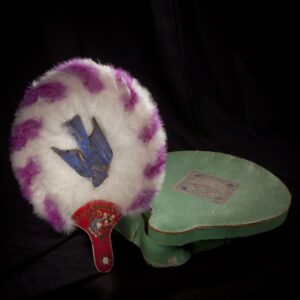 More Online Art Books
More Online Art Books
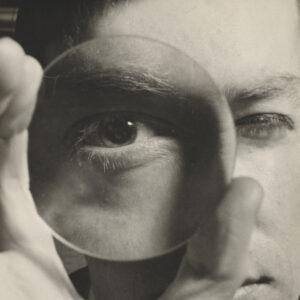 Acknowledgements
Acknowledgements